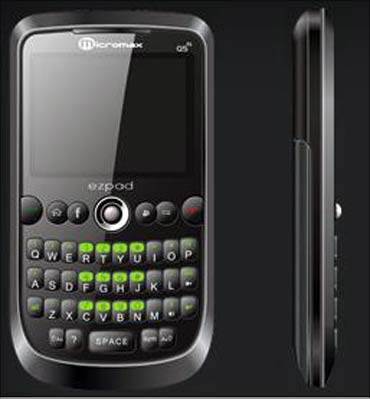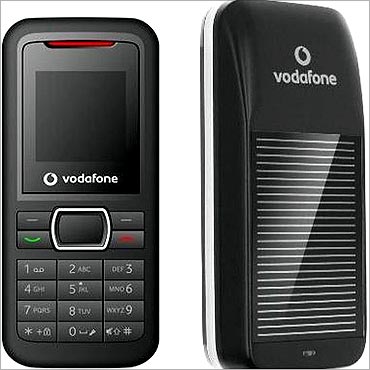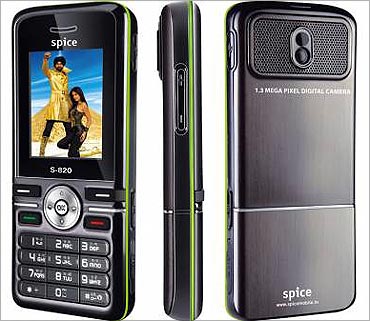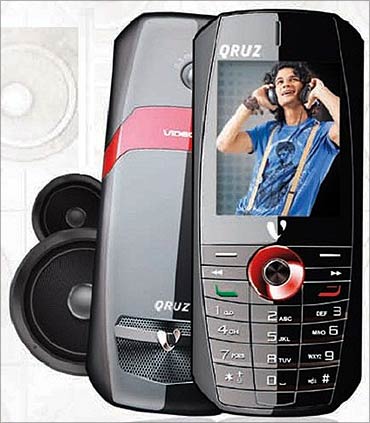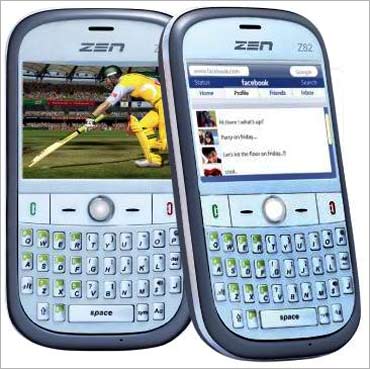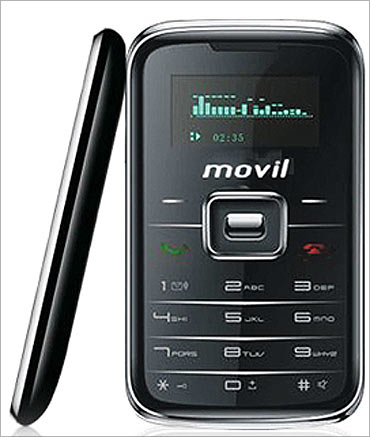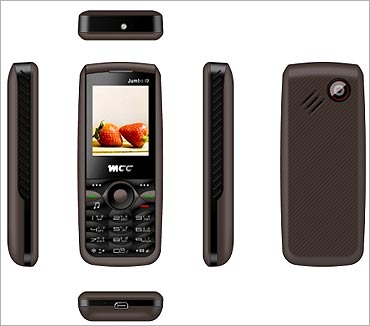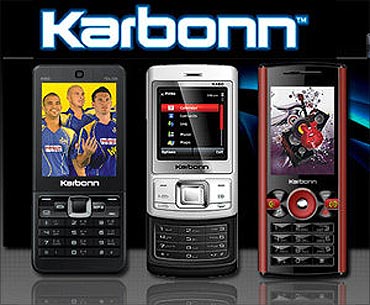 | « Back to article | Print this article |
How desi mobile makers are winning over India
Hamza Rashid works in a renowned Nashik vineyard. Three months ago, he opted for a triple-SIM Spice Mobile handset worth Rs 5,500.
"When you have three SIM cards - one for local calls, another for STD calls and a third one for the free talk time, it is only logical to buy a triple-SIM handset, instead of buying three different mobile phones and keeping each one's battery charged," says the 40-year-old farm hand. Sheikh and millions of new mobile users from Tier-II and -III towns are demanding multimedia features at affordable prices.
With a steady influx of new brands, the Indian mobile market in the January-March period of 2010 has seen multi-SIM phones capturing 38.5 per cent of the market.
Home-grown brands like Micromax and Spice, among several others, have a 33 per cent share in the total mobile handset shipments in April-June 2010.
Click NEXT to read on...
How desi mobile makers are winning over India
According to International Data Corporation (IDC), a new mobile handset model is launched by a vendor with some innovation or the other almost on a daily basis. Most features address basic user concerns in an emerging market like India.
For example, 30-day battery back-up phones, or even solar-powered handsets, were introduced to tackle the problem of erratic power supply in large parts of the country.
If users need devices to operate in noisy, dusty or humid conditions, then manufacturers pack high-decibel speakers, dust-proof lamination, water-proof outer casing in their handsets.
Click NEXT to read on
How desi mobile makers are winning over India
IDC India's lead telecom analyst Naveen Mishra notes: "In the last few quarters, shipments of mobile phones in the country have been growing, especially for models that include a long battery life, dual-mode (GSM and CDMA), Qwerty keypad, multimedia (FM radio, MP3 player), expandable memory slots, among others."
Click NEXT to read on
How desi mobile makers are winning over India
The numbers reflect what users like Himank Ghasiya, who works in a call centre in Aurangabad, prefer. Ghasiya bought a Videocon Qruz mobile just a month ago.
His feedback: "I was looking for an affordable handset that I could use to play music aloud while I was travelling or out with my friends. For Rs 3,195, Qruz seemed value for money."
Videocon Qruz is a 100W PMPO Music Output phone with really large speakers, coupled with an extended battery support (1800 mAH battery).
Videocon Mobile Phone COO Rahul Goel says: "We pay attention to customer's feedback. There was a growing need for mobile phones with large speakers among the younger users. So, we launched Qruz with dedicated music keys and features like FM Radio on loudspeaker and stereo FM recording."
Click NEXT to read on...
How desi mobile makers are winning over India
Zen Mobile National Marketing Head Smarth Bansal is also catering to consumers from rural areas who ask for handsets with a long battery life.
"Features like a torch, too, find many takers in rural areas. They also ask for a very good sound quality so that everyone around can listenas they like to play music to a group of people," Bansal says.
A dip-stick research by Zen Mobiles found consumers would like to use mobile phones with regional language support. "So, we are trying to launch mobiles with around 18 languages to cater to this demand," Bansal informs.
Click NEXT to read on...
How desi mobile makers are winning over India
The ability of local mobile handset brands to pay close attention to customer demands at the grass-root level and incorporate the corresponding features in handsets is making them a force to reckon with.
Emerging mobile handset vendors have been quick to add many attractive features at competitive price points, explains IDC India's Mishra. "Punjab and nearby states are more prosperous than UP and Bihar. So, users prefer higher-end phones with bigger and wider screens," he says.
Even Movil Mobile MD Rajeev Khanna admits dual SIM is a feature that rural users prefer, especially youngsters in Tier-II towns, as they end up with two SIM cards while trying to capitalise on bargains from multiple telecom operators.
Click NEXT to read on...
How desi mobile makers are winning over India
"We sell around 200,000 handsets in villages every month. Indian brands sell more in Tier-III locations because users want a bunch of features on their phone while their average spending on a mobile phone is below Rs 2,000 a piece. They can never get multi-media features at this price from established brands," adds Bansal of Zen Mobiles.
MCC Group, a service-based national sales and distribution company, forayed into the mobile handset business with the launch six handsets.
The brand's flagship model Jumbo i9, which costs Rs 2,599, is a dual-SIM mobile phone that comes loaded with a 45-day battery back-up, Bluetooth, GPRS and expandable memory. MD Ajay Mehta says: "We are already selling half a million handsets every month."
Click NEXT to read on...
How desi mobile makers are winning over India
In a bid to fine tune its reach, Karbonn is ready to roll out a direct-to- consumer (DTC) sales strategy for rural districts. "Once we set-up a DTC model, we will also look at micro-financing for first-time mobile users. We are currently in talks with potential partners," says Devsare.
Buyers in rural and semi-urban areas are more value-loyal than brand loyal, admit handset vendors.
IDC India Associate Vice-President (Research) Anirban Banerjee says: "We believe, since the large metros have already achieved a high mobile tele-density, upcountry and rural markets will continue to show a healthy appetite for mobile handsets over the next two-three years."
